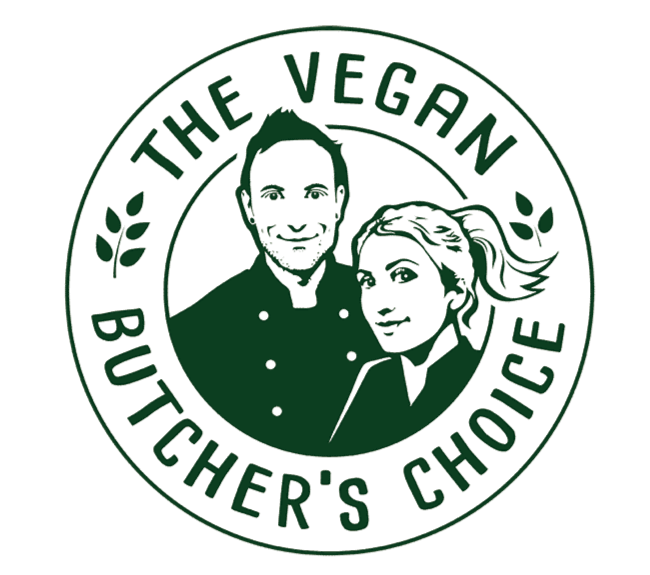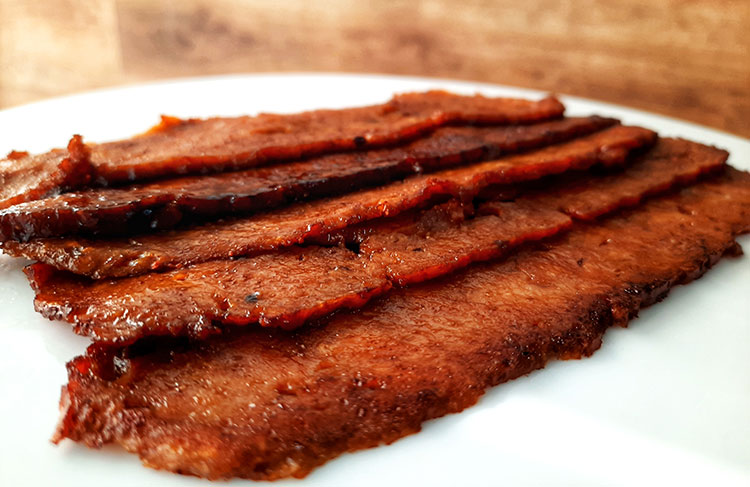Seitan is the most versatile vegan meat
We absolutely LOVE seitan. That was probably already obvious! It’s a versatile staple food, you can mould it in any shape and add any flavour you want. At The Vegan Butcher, we’re always looking for that PERFECT texture, and irresistible taste. Do you want to know about this fascinating food, that goes back thousands of years? And what about the nutritional value?
Brief History of Seitan
The term ‘seitan’ originates from the combination of two Japanese words: sei, meaning “made of” and tan, which means “protein”. It was Japanese philosopher and preacher of the macrobiotic diet G. Ohsawa to coin the term, bringing it to the Western world in the early ‘60s.
However, seitan’s origins go back much farther in time. Its ancestor, wheat protein (aka gluten), can be dated back to ancient China already in the 6th century. Buddhist monks discovered this ‘wheat meat’ after soaking some dough in water and removing all the starch. The remaining gluten dough would then be fried or sautéed in oil and other seasoning before simmering in water or broth.
While wheat gluten itself is rather flavorless, seitan holds very well a marinade and any other liquid one might use to simmer it or cook it. Additionally, gluten naturally contains umami compounds that enhance taste, and a satisfying kind of ‘bite’, which made it easy from its very beginnings to compare it to meat.
It is no surprise then that seitan, as many of us know it today, has evolved into more complex shapes such as steaks, cutlets, roasts, sausages, etc.

Is seitan good for me? Nutrition of seitan explained.
Artisanal seitan is a simple and highly nutritious food, loaded with protein, high in iron, and relatively low in fats (compared to the animal-based products) and carbohydrates. From a molecular perspective, wheat contains four types of proteins, two of which – Gliadin and Glutenin – are water-soluble and form the gluten. Even at the level of amino acids, seitan is considered a good ingredient. Although lysine is more scarce, it is sufficient to include in the diet other foods rich in this amino acid (such as legumes and nuts, not necessarily in the same meal) to have a balanced protein intake at the end of the day. Other positive features of seitan are that water often represents half of its weight and carbohydrates are very limited – making it suitable for those following a low-carb diet (averaging at 5.2 g per 100 grams).
What about celiac disease and gluten intolerance?
Unfortunately, a crazy diet trend boosted by celebrities a few years ago has led many to believe that gluten is bad for our health; this resulted in several people dropping gluten all together without any specific reasons and then facing serious issues once they decided to reintroduce it back in their diet.
Of course, due to the high presence of gluten, seitan is absolutely contraindicated for patients with celiac disease and not recommended for those with intolerance to this substance. This disease is pretty rare and it impacts 1% of the worldwide population so do not make self-diagnoses but have yourself checked by a specialist.
For all the reasons listed above, the short answer is yes: seitan is a valuable food to incorporate in the diet not only for vegetarians/vegans but also of those needing to reduce their intake of cholesterol and fats. As for all things, it is important to keep in mind that a varied and balanced diet does not revolve around one unique food and – even among seitan – there are several types of products and seasonings which might highly impact its nutritional properties (examples: heavily processed or fried food made with seitan).
CONCLUSION:
A healthy and balanced diet starts with eating a wide variety of foods. Our planet is blessed with a plethora of edible and tasty plants, and the recipes you can make using them are almost endless. The feedback we often hear from people going vegan is that they eat much more varied then before. Seitan is perfect to add to your grocery list or meal plan. You can learn to make a simple seitan yourself too, it’s not that hard!
Too lazy? There are many healthy, tasty seitan products out there. Try them!

